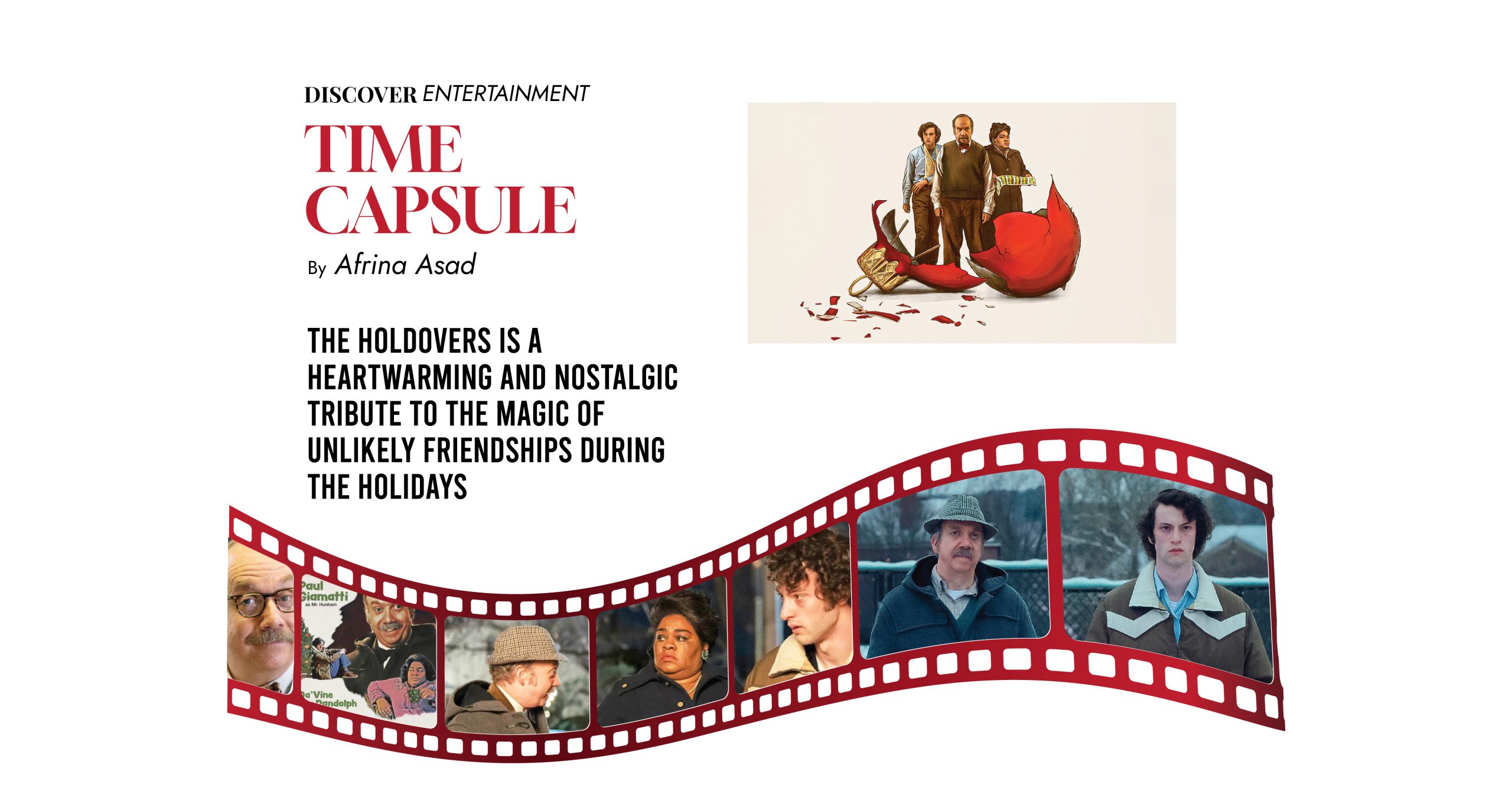
Three social misfits are left behind at a boarding school and compelled to spend a snowy Christmas together. Despite their different backgrounds, an unusual bond gradually forms among them as they realise they all share a similar bleak outlook on life. The Holdovers (2023) may not be your typical Christmas movie, but it still manages to evoke a cosy and nostalgic holiday spirit. Director Alexandar Payne weaves a story of loneliness, poignancy, and friendship in a darkly comedic way. With a plot set in the 1970s and witty narration, the film won the hearts of many and swept awards and nominations in various categories.
The heart of the film lies in its characters. It revolves around Paul Hunham, a gruff history teacher, portrayed by Paul Giamatti, who forms an unforgettable duo with Payne, as seen previously in Sideways (2004). The teacher shares a bittersweet relationship with Angus Tully, a troubled teenager with a tragic past, played by breakout star Dominic Sessa. Together, they create a dynamic that breathes life into the movie. Alongside them, Da’vine Joy Randolph delivers a mind-blowing performance as Mary Lamb, a grieving mother and cook, which has earned her an Academy Award.
The Holdovers doesn’t shy away from complex emotions. It delves into grief, loss, and the search for connection. This authenticity makes the characters relatable and their journey towards finding solace all the more heartwarming. The film can be compared to classics like Good Will Hunting (1997) and Dead Poets Society (1989), which also touched audiences and left them yearning for a happy ending for the outcasts.
Apart from the talented cast, the cinematography of The Holdovers garnered critical acclaim. The film looks, feels, and sounds like it was actually made during the decade it is set in: the 1970s. But instead of relying on traditional film stock, cinematographer Eigil Bryld shot the film digitally, while also adopting 70s filmmaking techniques like handheld camerawork to craft a grainy, vintage feel through a trial-and-error process. He drew inspiration from films such as Hal Ashby’s The Last Detail (1973) and Francis Ford Coppola’s The Conversation (1974).
Another factor that contributes to the vintage vibe is the film’s setting. The fictional Barton Academy, a boarding school located in Massachusetts, captures the perfect blend of an eerie and a cosy Christmas ambiance. Additionally, Massachusetts’s picturesque snowfall scenes and muted landscapes greatly enhance the visual aesthetic. The school’s interior is meticulously designed to create a warm and welcoming atmosphere, with spacious hallways and antique furniture.
The film feels like a warm hug, a comforting and nostalgic exploration of unlikely friendships and the power of human connection during the holidays. With its exceptional storytelling and authentic portrayal of human emotions, it is poised to become another holiday masterpiece that will be revisited and cherished every year, never losing its charm.
